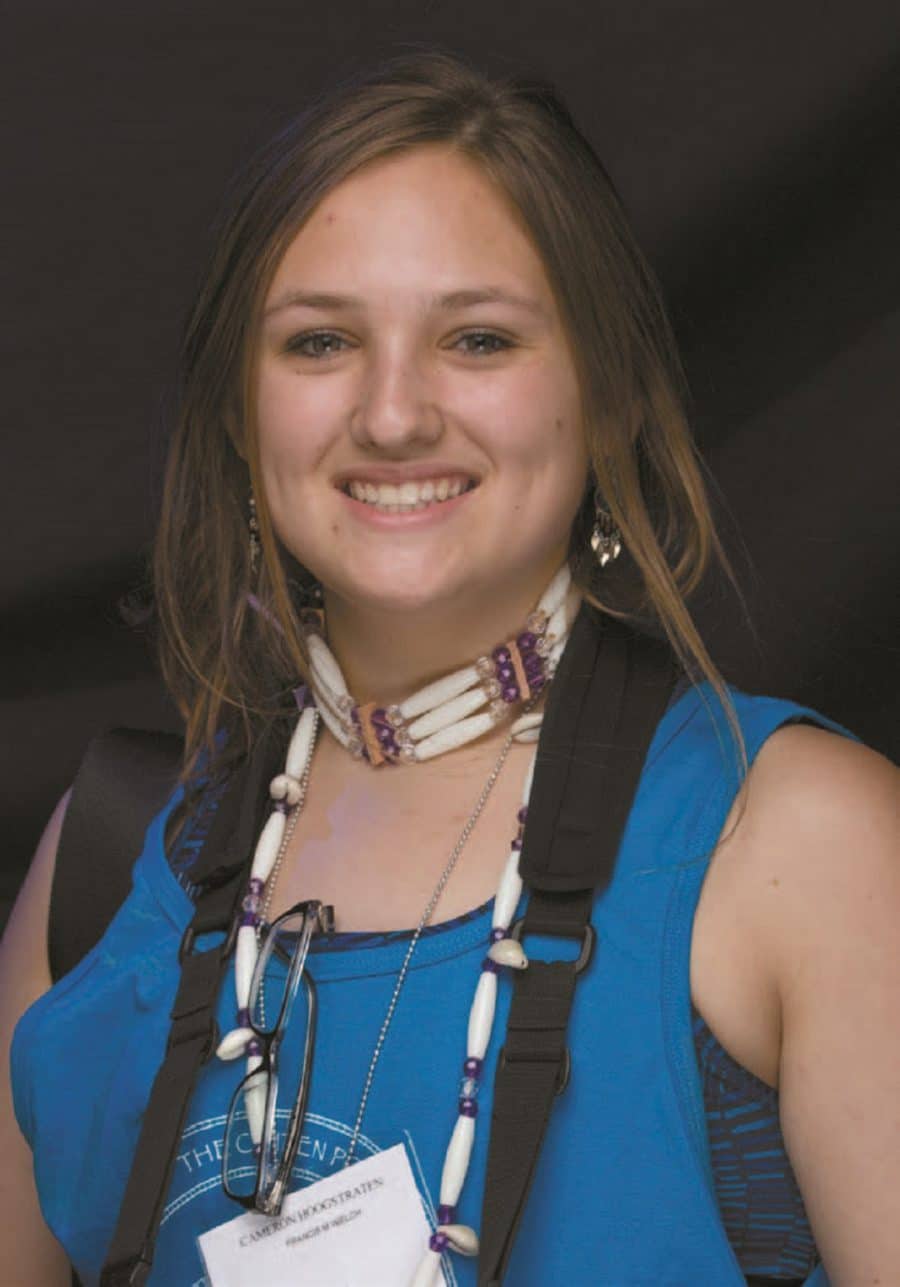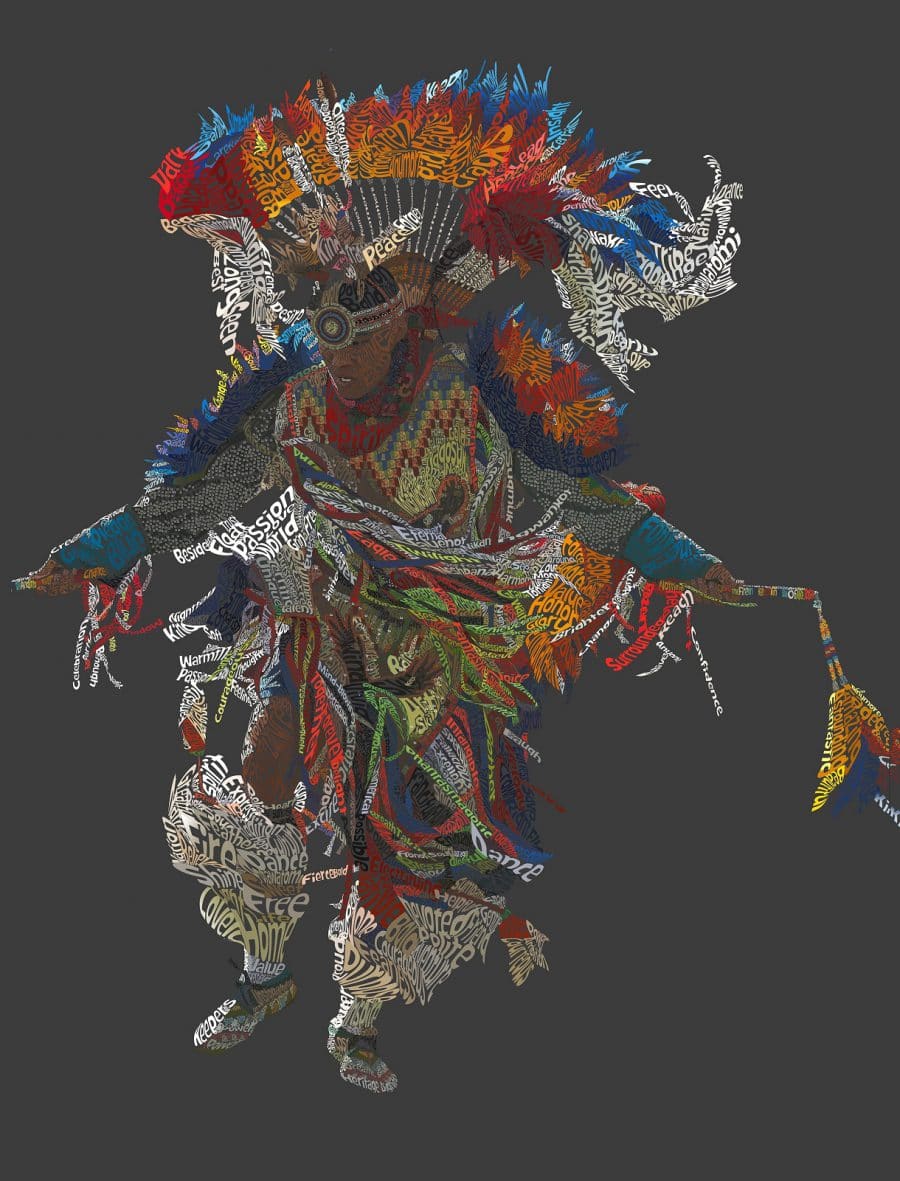
Many Citizen Potawatomi know – if only by sight alone – the work of renowned tribal member and photographer Sharon Hoogstraten. Over the years she has been a regular sight at tribal gatherings, where she shoots portraits of tribal members. Though her art has drawn wide praise in capturing Native Americans, especially Citizen Potawatomi Nation members, another Hoogstraten is following in her footsteps in terms of accolades for her work.
In spring 2017, Cameron Hoogstraten, niece of the well-known Potawatomi photographer, won the U.S. Sixth District of Michigan’s Congressional Art Competition for her digital illustration titled “Native American Dancer.”
The Kalamazoo, Michigan native will be a junior at Ostego High School and said she’d like to pursue a degree in chemical engineering in college, preferably at Michigan Technical University. It isn’t often that one finds a high school junior that wins recognition for art and also wants to pursue a career in chemical engineering. Cami’s practical view on the matter sounds convincing though.
“Chemistry is fun, engineering seems fun and best of all, it pays,” she noted. “I’m hoping to work on the creation of new types of medicines and other medical areas.”
She created her work “Native American Dancer” based off a photograph she had taken while accompanying her aunt at the Dowagiac Potawatomi Nation Powwow. Though she has always been artistic, enjoying painting, drawing and other forms of art, that day at the powwow was the first time she had ever picked up one of her aunt’s “big fancy cameras.”
As part of an assignment for her high school computer imaging class, Cami used Adobe Photoshop to recreate the image she captured of a male fancy dancer with typography she said was evoked by looking at the original picture.
“I had to match the (typography) color to the color that was on the picture, shape it to the area and then put it into the picture and add another layer on top of it,” she noted.
Words like “love,” “home,” and even the name “Hoogstraten” can be found at a glance of the drawing.
“I used a lot of words that I felt personally about Potawatomi culture,” explained Hoogstraten. “Other times I would use a thesaurus, while I’d also listen to songs and pick out words. I’d even had an English to Potawatomi translator pulled up – so I would type up words that I felt mattered in English and translate them, so there’s some actual Potawatomi words in there.”
It took her around 60 hours to complete as part of the class assignment. Hoogstraten estimated that there are approximately 1,000 words in the photo but admitted the exact number is unknown.
“About halfway through I just realized I wasn’t going to keep track,” she said with a laugh. “I just kept going in order to finish it and not count.”

Her work wouldn’t have been as possible just a couple decades earlier, with digital photography being a relatively new medium in which to work through digital programs on computers. In fact, it was only at the insistence of her art teacher, who had originally assigned her the project that ended up becoming the photo, that it ever was submitted for a contest. She acquiesced to his request, and before she knew it, her work had been awarded first prize at a local museum contest.
“Native American Dancer’s” success vaulted it to another contest, where it won the top prize in her local Congressional district.
Congressman Tom Upton, (R-Michigan) commented upon meeting with Hoogstraten that “the arts play such a big role in our communities, especially for high schoolers looking to express themselves. I’m proud of Cami’s hard work and creativity and look forward to seeing her work hang in the U.S. Capitol for literally thousands to admire.”
The work will now be displayed in the capitol building in Washington D.C. for the next year as part of the nationwide congressional art show exhibition. Her work is also competing for the top prize against the other national winners.
Hoogstraten said she was grateful to be recognized for her work regardless of how the national contest finished. Her one goal is to identify the person who she originally photographed, as the photo was one of dozens she shot at that powwow before ever realizing what lay ahead.
“I’m hoping that some of the publicity from this will help us contact him,” she said.
Perhaps the best compliment comes from her aunt, Sharon Hoogstraten.
“She took the physicality of what was there, which was awesome, and put an interpretation on it that gets the emotional part of it. The words, ‘spirit’, ‘Potawatomi’, are her emotional response to that regalia.”
